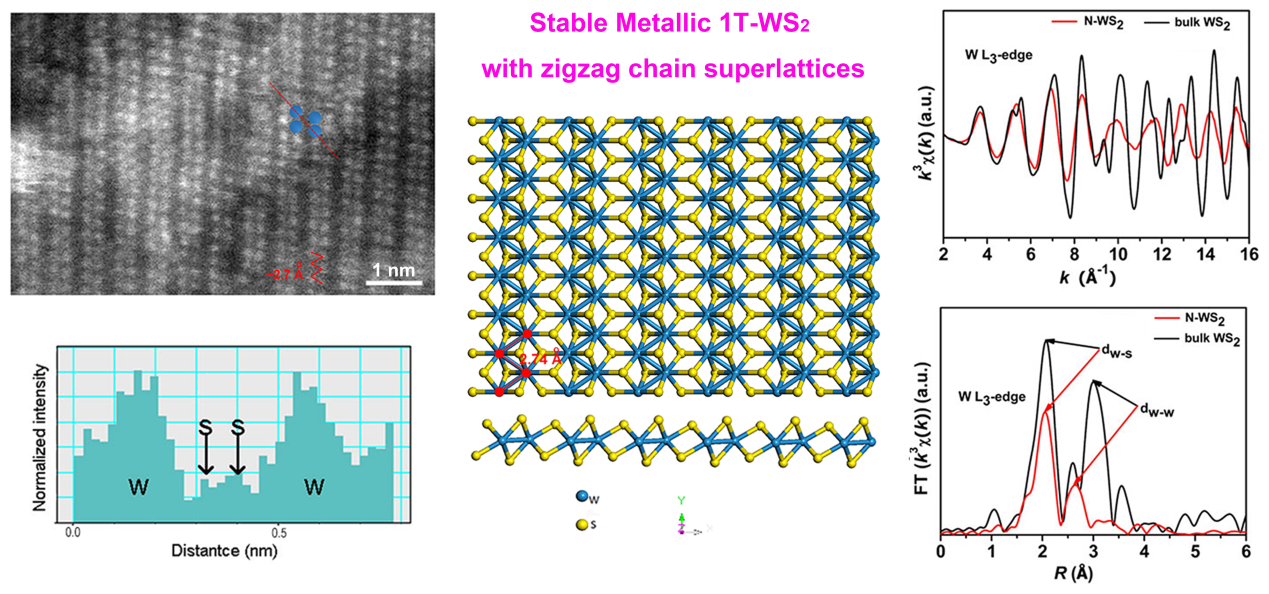Stable Metallic 1T-WS2 Nanoribbons Intercalated with Ammonia Ions
As one of typical materials in transition metal dichalcogenides allotrope (TMDs), layered tungsten disulfide (WS2) shows a unique combination of valuable structural, electronic, optical, mechanical, chemical, and thermal properties that have been studied for decades. Recently, the Research group of Prof. Li Song from National synchrotron Radiation Laboratory, University of Science and Technology of China has in the made great progress investigation of the preparation and applications of stable metallic 1T- WS2. This work has been published on Advanced Materials 2015, 27, 4837-4844 with the title of “Stable Metallic 1T-WS2 Nanoribbons Intercalated with Ammonia Ions: The correlation between Structure and Electrical/Optical Properties”.
 Stable metallic 1T-WS2 nanoribbons intercalated with ammonia ions.
Stable metallic 1T-WS2 nanoribbons intercalated with ammonia ions.
It is well known that WS2 by its nature is a semiconductor with trigonal structure in which the S atoms are located in the lattice position of a hexagonal close-packed structure. Theoretically, WS2 layer has two distinct symmetries depending on the arrangement of S atoms, i.e. 2H phase (trigonal prismatic D3h) and 1T phase (octahedral Oh). The two phases are quite different in electronic structures and other properties. For example, WS2 with 1T phase is metallic, distinctively different from the semiconducting 2H phase. Song group developed a new bottom-up hydrothermal method to successfully realize ammonia-ion intercalated WS2 ultrathin nanoribbons (N-WS2) with high stable metallic phase. In combination with the atomic microscope observations, the synchrotron radiation-based X-ray absorption fine structures revealed that the nanoribbons exhibit W-W reconstruction and W-S distorted octahedral coordination, resulting in an anomalous zigzag chain superlattice. The distinctive features in electrical transport and Raman scattering of the N-WS2 nanoribbons were studied and correlated to its unique structure, which are further supported by density functional theory calculations from collaborator Prof. Xiaojun Wu’s group at School of Chemistry. This new route may open up the possibility of realization of stale metallic phase in layered TMDs for greatly extending their potential applications in specific fields.
7 - 副本.png
Back

